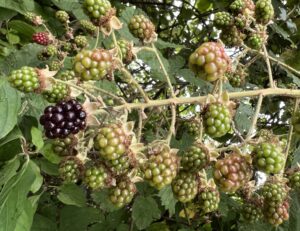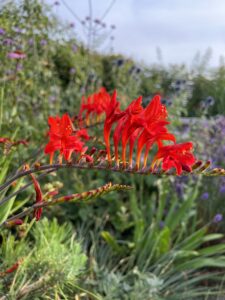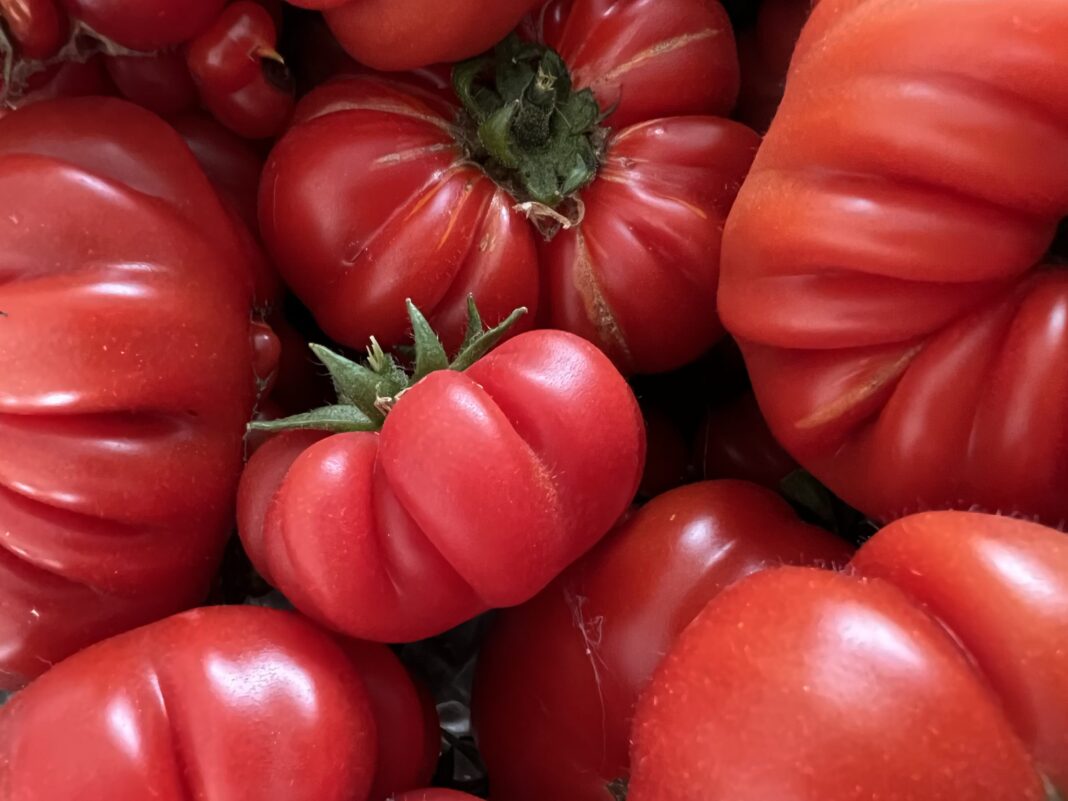It’s been a whole year of my monthly gardening columns, and I decided to start comparing this year’s season of harvest and blossom.
Compared to last year, our harvest seems to be about two weeks later. Yes, we had heat and dry weather all June, but many of our vegetables and fruit are suffering from the cold damage we had in May. Tomatoes in the greenhouse are just ripening (and recent winds have also knocked over many of our plants). Our raspberries are truly feeling the heat, and the harvest is dramatically lower. Strawberries suffered – any fruit was much smaller. We have discovered other berries have done better. The gooseberry, loganberry and blackcurrant crops were good, both in size and sweetness.

The corn got really hit by the cold in May, and the plants are still much smaller than they were this time last year. Our first cobs were sweet and since I don’t feel you can ever buy them as sweet, they are still worth growing. We have watered our beans and peas regularly and managed to freeze quite a few bags of them for winter.
Yes, there is a harvest, but we are concerned by how much watering we need to do to get produce each year. Our best success is with fennel, and our allotment neighbour shared with us some of his amazing artichoke flowers. We have cooked them for about an hour and they are lovely in salads and pasta.
So, as we reflect on the year, we are beginning to look at what we should be planting and growing, given the changing climate and really extreme dry weather we keep getting. Should we focus more on easier, Mediterranean and perennial-like crops which can grow deeper roots and survive without so much water?
 In the flower garden, the borders are now a riot of colour – lavender, sage and cosmos are finally attracting the bees and butterflies we have missed so far this year. We have grown mexican sunflowers for the third year- if nurtured well, they grow into robust, multi-stem plants with vivid orange flowers which light up the darkest corners. The ones I have grown in the ground are struggling, but the ones I kept in pots and watered often are now about 3 feet higher and in flower.
In the flower garden, the borders are now a riot of colour – lavender, sage and cosmos are finally attracting the bees and butterflies we have missed so far this year. We have grown mexican sunflowers for the third year- if nurtured well, they grow into robust, multi-stem plants with vivid orange flowers which light up the darkest corners. The ones I have grown in the ground are struggling, but the ones I kept in pots and watered often are now about 3 feet higher and in flower.
Echinacea really need lots of water in our garden in the spring, and now they are filled with flower buds. I have learned yet again the importance of patience. I thought we had lost tender salvia amistad in our cold winter. Only in late June did we see new shoots emerging from the still alive root stock, and finally in July it is flowering. Hoorah! Sipping tea in the garden yesterday, I spied an extraordinary insect at work. Little “leaf cutting” bees have been busy cookie-cutting circles from new rose leaves. Evidently they take these to their solitary nests as food for their larvae.
Our disappointment are the plants in our shady areas under trees. Drought has finished off plants like pulmonaria and brunnera. We chose varieties for their almost evergreen nature year-round. But without extra watering, they have shrivelled and died. Yes, they will probably re-grow next spring, but do we want to see bare earth for much of the year? I am now searching for dry shade growers as possible replacements.
Image Credits: Abigail Cooper-Hansen .




Gosh a year of your articles Abigail ..and all have been fun and informative to read..
every year of horticulture will have things do well and the don’t as weather is always never the same one year to another. Interesting to read in the article on King George that there was a mini Ice age of few hundred years. So climate change has been part of the life of the world..
So wether you will have to grow different plants to accommodate climate changes that we are now constantly told about …will be difficult ..as last year was so hot and this has been cooler..
I suspect we should all get the actual soil we have back into good heart..and keep putting on compost and try not to keep digging. As digging destroys the soil structure..and the more we learn of this is so fascinating..
And this will help the soil to grow healthy plants ,and retain moisture so cut down you watering so much. And not leave as little soil bare as possible.
Looking forward to your articles for another year.